2021 Remote Work And COVID-19 Statistics: How Work-From-Home Impacts U.S Employees
Source:https://sleepstandards.com/remote-work-covid-19-survey-statistics/
When the COVID-19 pandemic exploded last year, U.S employees had to shift to remote working life. Now, when we are adapting to the “new normal”, let’s take a look at how that work-from-home period impacted us (and may change our life forever).
Table of Contents
- Productivity and Job satisfaction after going back to physical offices
- Changes made by work from home (WFH)
- How Work From Home (WFH) Changed Sleep Quality and Sleep Pattern
- Methodology and Limitations
- Fair Use Statement
Productivity And Job Satisfaction After Going Back To Physical Offices
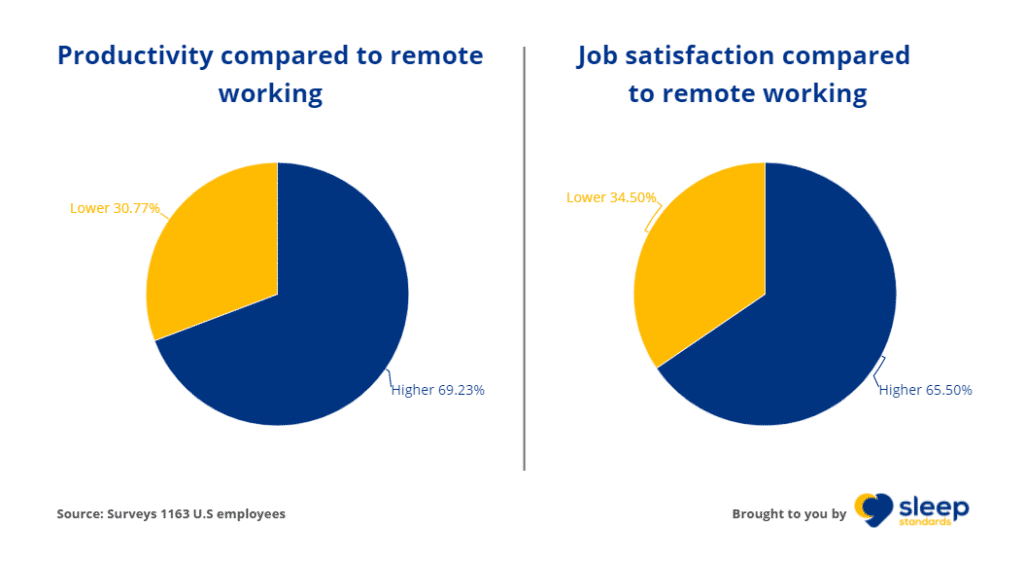
- 69% of employees said they’re more productive working at an office and 66% said their job satisfaction is higher compared to remote working.
- 82% of elderly workers (55+ years old) are more productive working in a physical location compared to remote working.
- 11% has higher productivity but lower job satisfaction compared to when working from home.
What Leads To Higher/Lower Productivity When Working Offline
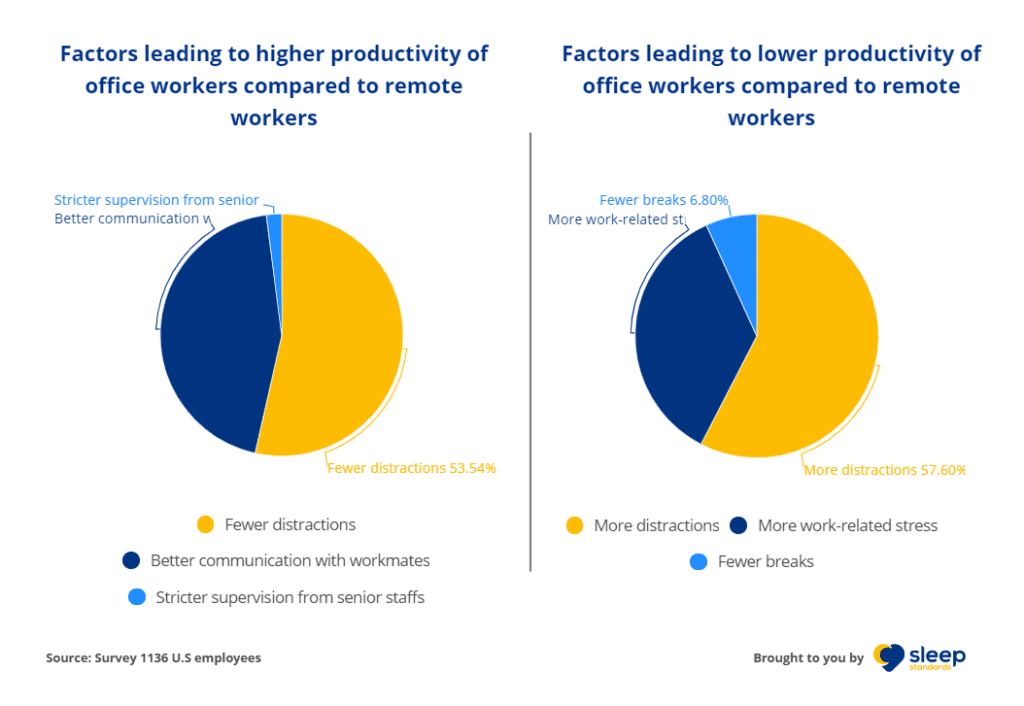
* Please note: The percentages mentioned in this graph are not calculated based on all of the survey respondents. Each group is taken into consideration separately. When we report “53.54% of respondents were more productive due to fewer distractions”, this only accounts for the group who did report having better productivity working at a physical office.
- Distractions are the leading factor impacting productivity. While 54% have higher productivity thanks to fewer distractions at their offline office, 58% are less productive due to more distractions at their physical workplace.
- Another common reason productivity is higher when working offline is better communication with other employees. 44% reported improved communication with their fellow employees helped with productivity.
- Work-related stress is why 36% are less productive working at an office compared to working from home.
What Leads To Higher/Lower Job Satisfaction When Working Offline
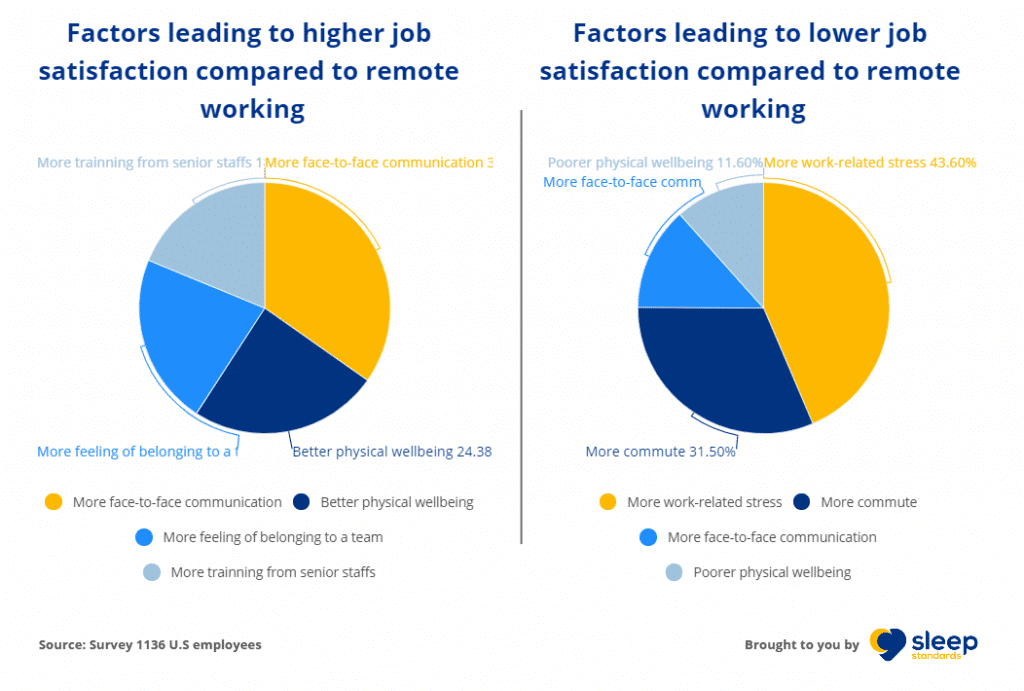
*Please note: The percentages mentioned in this graph are not calculated based on all of the survey respondents. Each group is taken into consideration separately. When we report “24% said their job satisfaction is higher when working at an office due to better physical health”, this only accounts for the group who did report having higher job satisfaction working at a physical office.
- 24% said their job satisfaction is higher when working at an office due to better physical health while 12% said they’re less satisfied due to a reduction in physical wellbeing.
- People often believe that physical interactions with other employees would yield better job satisfaction. There are cases where this is not true. In our survey, 35% said they are more satisfied with their job because of more face-to-face communication while 13% have lower job satisfaction due to the same reason.
- Increased work-related stress and increased commute are the most common reasons for lower job satisfaction when working at a physical office. 44% of respondents reported increased work-related stress negatively affects their overall job satisfaction. 31% felt that increased commute leads to their lower job satisfaction. Noticeably, 70% of those commuting more than 1 hour per day reported decreased job satisfaction compared to remote working.
Changes Made By Work From Home (WFH)

- Nearly half of employees (45%) cherish time for family and themselves thanks to work from home.
- 38% become more tired of commuting and 33% become more self-disciplined because of remote working.
- Noticeably, after the WFH period, 26% of the respondents become less comfortable communicating in person with workmates.
- About 24% of home workers are experiencing “Zoomsick”(a fear of having meetings on apps like Zoom through video conference calls).

Before actually working from home, 82% did want to try it. However, after experiencing remote working, only 35% want to go back to that working life.
Among those wanting to go back to working from home:
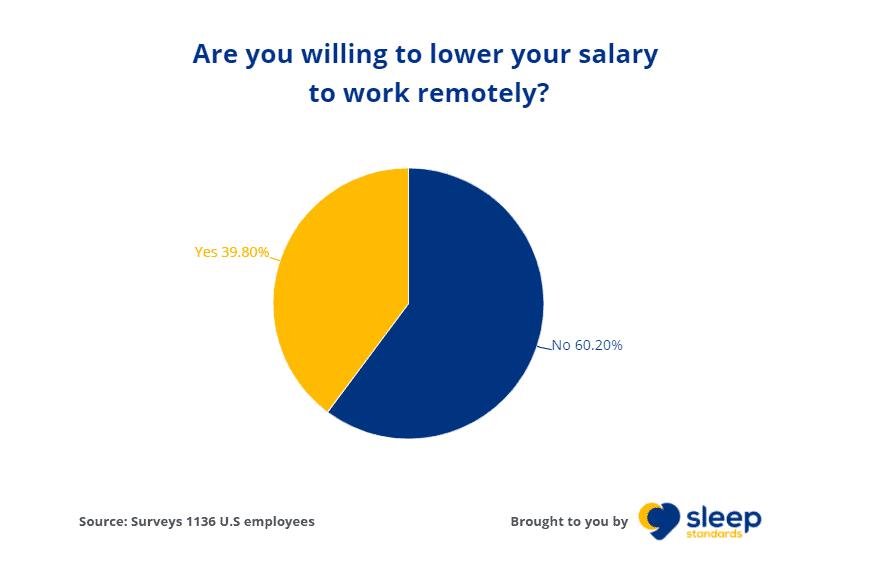
40% are willing to lower their salary to work remotely. Among them:
53% are willing to cut off 10-15% of their salary to switch to remote working. 32% can even accept a cut of 20% or more.
(Detailed statistics shown below)

Among those who don’t want to go back to working from home:
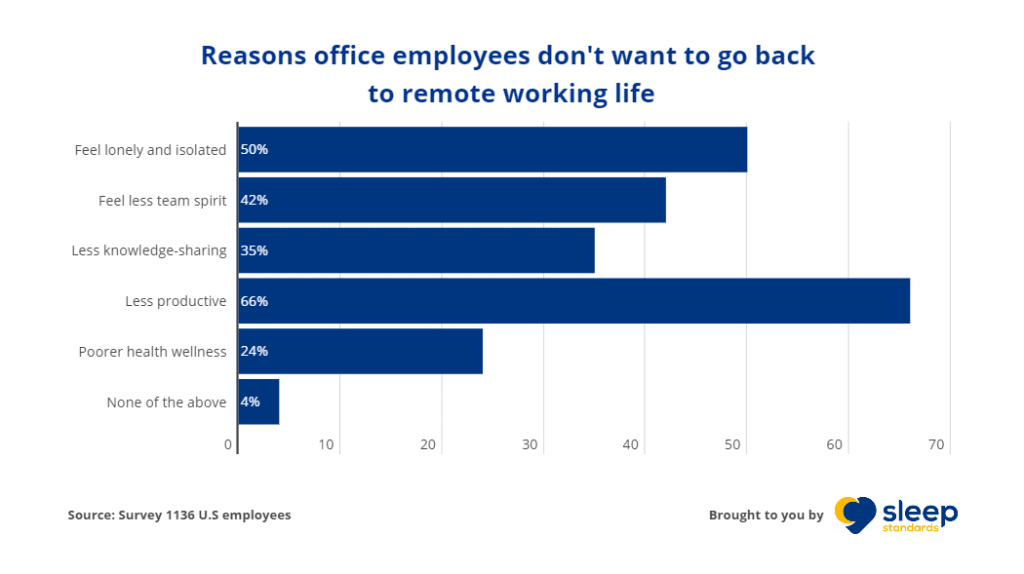
- Two-third don’t want to back to work from home because it’s less productive.
- Half of those refuse to continue working from home said it’s because they felt lonely and isolated during WFH.
- Other reasons including: feel less team spirit (42%), less knowledge-sharing (35%), and poorer health (24%).
How Work From Home (WFH) Changed Sleep Quality And Sleep Pattern
During the WFH period, fewer employees got insufficient sleep at night. They were also less likely to feel sleepy during the workday. By the way, such changes didn’t last once workers went back to offline offices. Further details are as below:
Sleep Duration Per Night
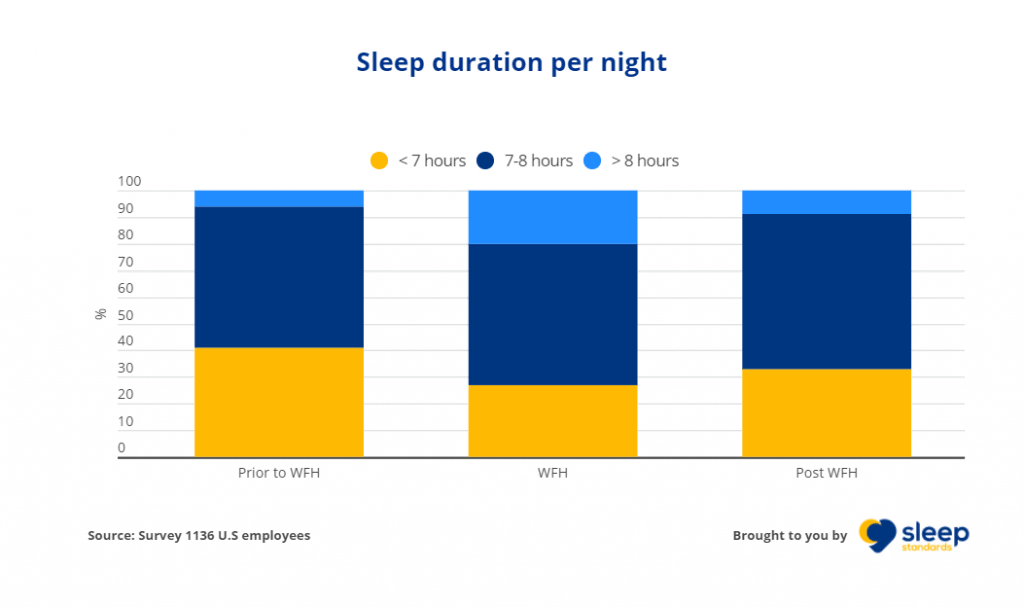
Prior to WFH, 42% hadn’t had enough sleep per night. That percentage dropped to 27% during WFH. However, when going back to offline offices, employees continue to get insufficient sleep: 33% do not get enough night’s sleep.
Night’s Sleep Timing
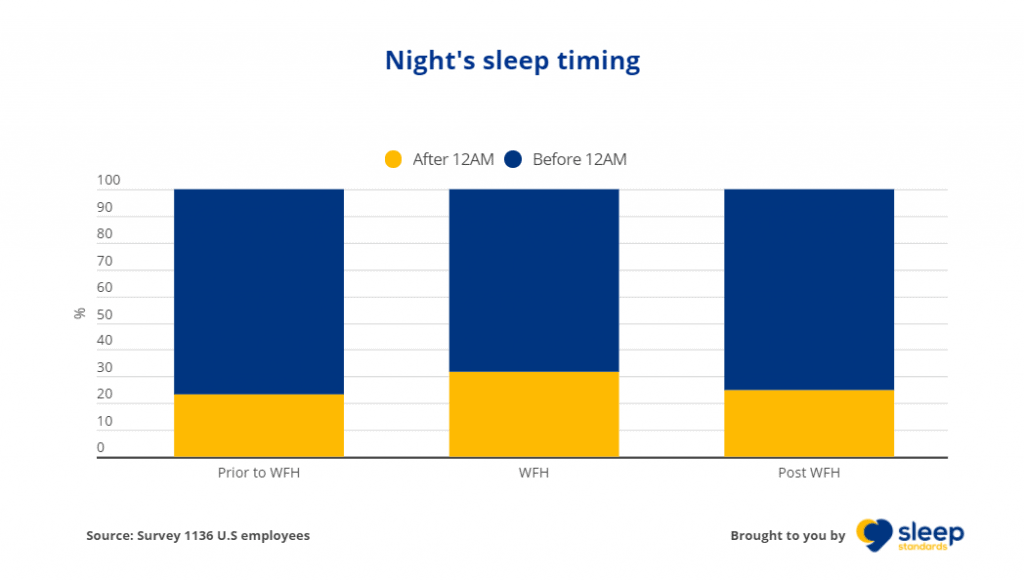
More time at home might make employees stay awake later at night. 32% of the respondents went to sleep after 12 AM while working from home. This is 9% higher compared to the period before the employees had to start working from home. Now that employees are going back to offline work, only 25% are still staying up late.
Feel Sleepy During Workday Frequently
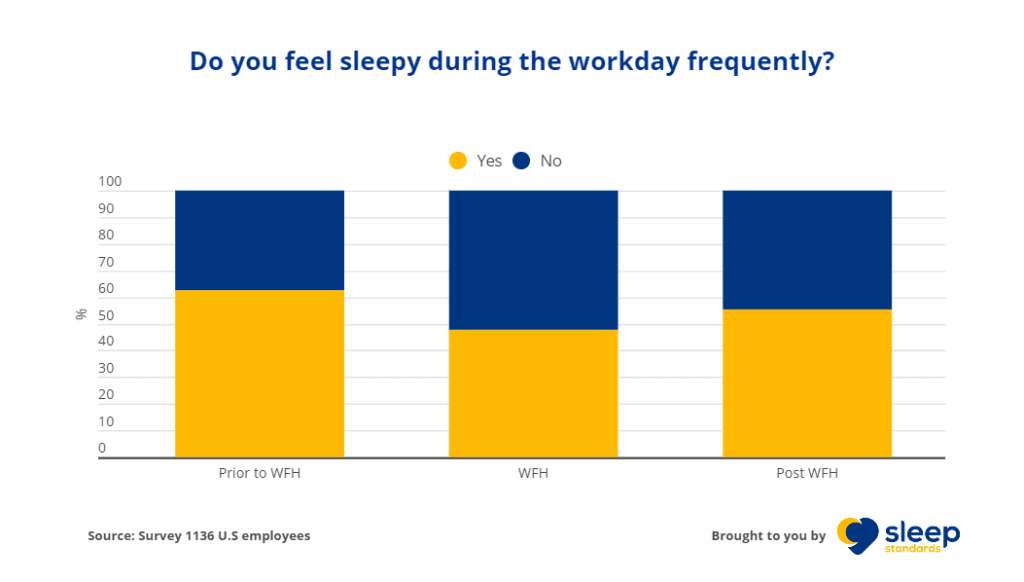
During the work-from-home period, 15% of employees were less likely to feel sleepy during the workday compared to the prior period. However, the percentage of employees who feel sleepy during the day rose by 7% (compared to WFH period) once they went back to their offices.
Methodology And Limitations
To collect the data shown above, we surveyed 1136 American respondents who once worked remotely during the nationwide lock-down and went back to normal office life as the regulations started to ease. An attention-checker question was included to ensure the participants did not mindlessly answer our questions.
Because the survey relies on self-reporting, issues such as telescoping and exaggeration can affect responses. Please also note that this survey’s results do not reflect our opinions.
Fair Use Statement
If you know someone who could benefit from our findings, feel free to share this project with them. The graphics and content are available for noncommercial reuse. All we ask is that you link back to this page so that readers get all the necessary information and our contributors receive proper credit.